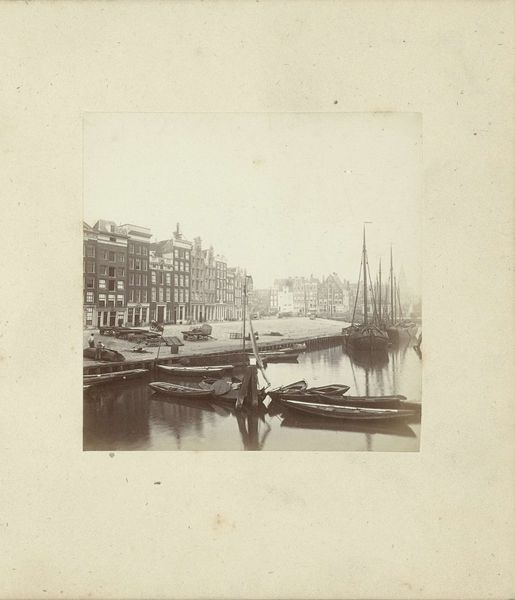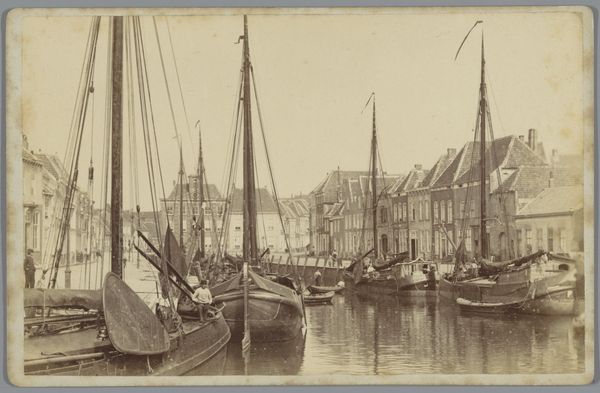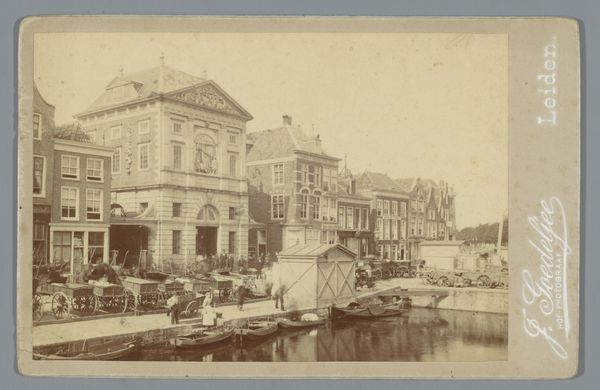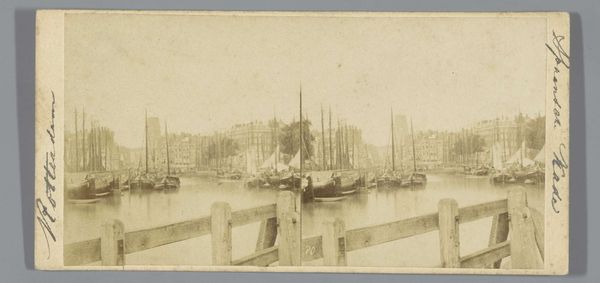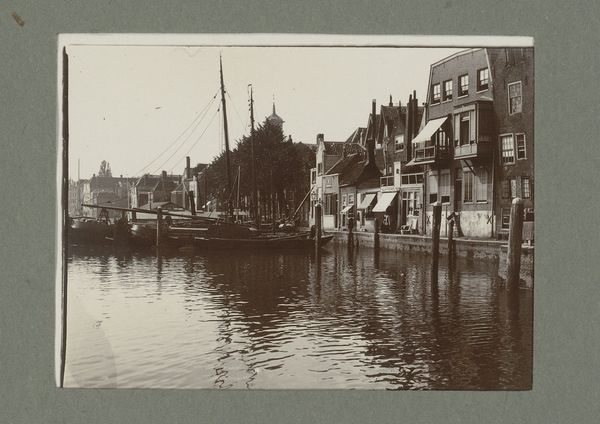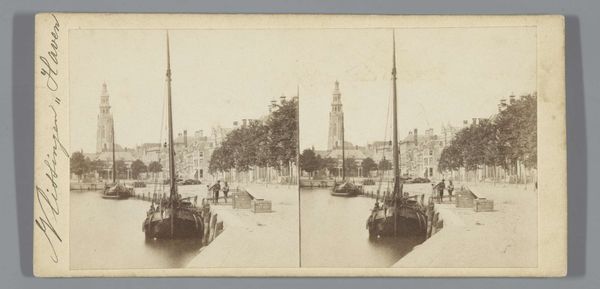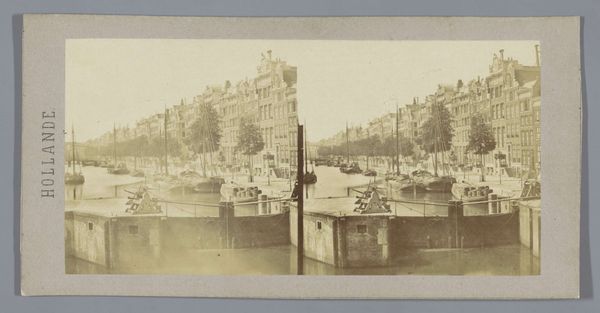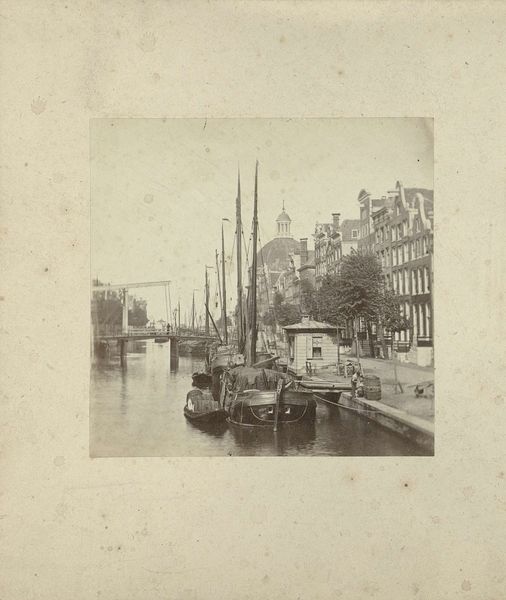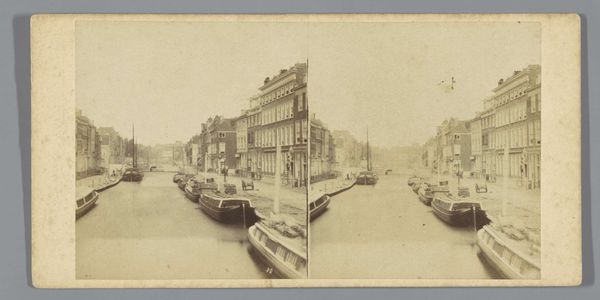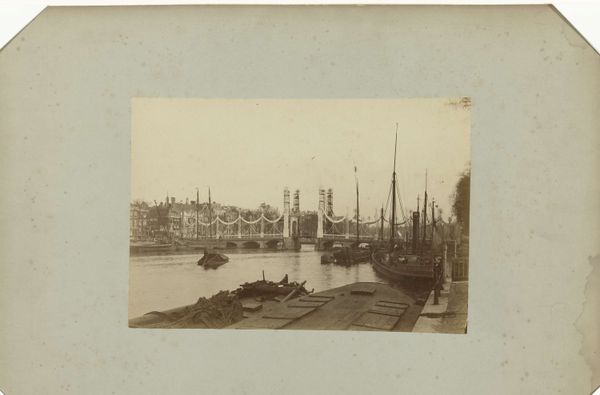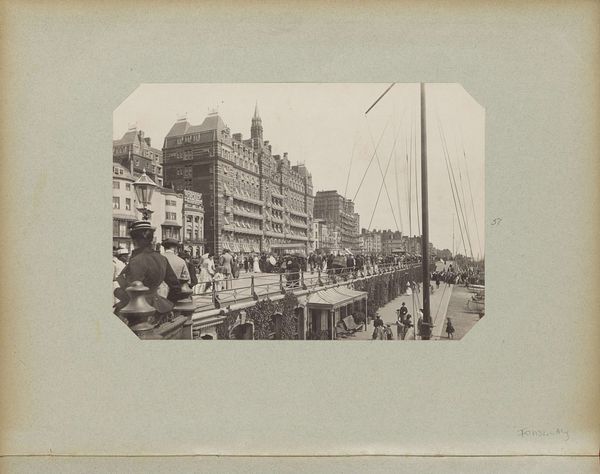
Gezicht op zeilboten in de Turfhaven met op de achtergrond de Pakhuisbrug te Hoorn c. 1920 - 1940
0:00
0:00
photography
#
still-life-photography
#
dutch-golden-age
#
pictorialism
#
photography
#
cityscape
Dimensions: height 74 mm, width 99 mm
Copyright: Rijks Museum: Open Domain
Curator: We’re looking at “Gezicht op zeilboten in de Turfhaven met op de achtergrond de Pakhuisbrug te Hoorn,” a photograph dating roughly from 1920 to 1940, attributed to G. Hidderley. Editor: My first impression is quiet melancholy. The tonal range is limited, the light soft. It evokes a world more imagined than documented, something filtered through memory. Curator: It exemplifies pictorialism, which sought to elevate photography to fine art through painterly techniques. Notice the soft focus, intended to create an atmospheric effect, and consider how this approach aligns with contemporaneous cultural shifts. After the first World War there was a yearning to romanticize the past. Editor: Yes, the blurring softens the lines of the commercial buildings, pushing the built structures into the background, so the emphasis shifts to the sailboats and the canal itself, symbols of connection and passage. Water often represents the subconscious and this image could capture an era moving from industrialization to nostalgia for what was being lost. Curator: And the image is of the city of Hoorn. We should consider this harbor town’s political and economic position. Hoorn was a crucial port in the Dutch East India Company, meaning wealth and power were deeply entwined with colonialism, this harbor became a major site for cultural and material exchange, but that history is obscured, perhaps deliberately. What does it mean to remember through the lens of pictorialism? Editor: It suggests a yearning for an imagined past, sanitized perhaps, the masts create almost a forest of vertical lines, pointing upwards, towards an unknowable future—or maybe it is reaching back. We are given these quiet shapes reflecting against the architecture along the harbor and its figures, but little contextualization. Curator: So this romantic harbor view is an act of remembering, while simultaneously obscuring more complex truths. Looking at art such as this makes it evident that the stories we tell are never complete. Editor: True, we must always question the symbols used in image making. Understanding visual culture can highlight uncomfortable truths.
Comments
No comments
Be the first to comment and join the conversation on the ultimate creative platform.

